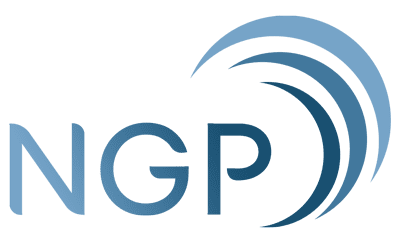
Are you a seasoned Public Relations (PR) Account Director looking to reinvent your approach to fit the modern landscape? A soon-to-be eager to prepare for what’s ahead? Or perhaps, an aspiring-to-be curious if this aligns with your career aspirations?
Wherever you may be in your career journey, this comprehensive guide is your launchpad to mastering every facet of modern PR, including the necessary tools and strategies proven to deliver results.
Start your journey now:
Definition and Scope of PR
Public Relations (PR) is the strategic process of shaping public perception and sustaining a positive brand image through fostering the relationships between organizations and their publics (customers, investors, media, etc.).
These methods include:
- Media Relations – Securing positive media coverage in publications, online outlets, and broadcast media.
- Crisis Management – Managing negative publicity and mitigating reputational damage during a crisis.
- Event planning – Organizing events that generate positive brand awareness and engagement.
Importance of PR in Today’s Business Environment
In today’s fast-paced and competitive environment, PR enables its clients to effectively and efficiently navigate the complexities of communication and reputation management, with services that include building trust with target audiences and the general public and managing any rising image crisis.
Role of an Account Director in PR
The Account Director is considered the brains of PR campaigns with a diverse range of responsibilities, involving:
- Overseeing and Execution of PR Strategies
They design PR comprehensive and relevant strategies to deliver results aligned with client objectives, such as in-depth market research, identifying key messages, and selecting the appropriate channels and tactics fit for the target demographic.
- Managing Client Relationships
As the primary point of contact, they’re responsible for fostering and sustaining these collaborative partnerships to not only guarantee clientele longevity but also deliver consistent value. Especially, in times of crises, where they must act swiftly, coordinate with stakeholders and mitigate negative impacts.
- Pitching and Fostering Media Relations
They employ effective practices to boost media relations to secure coverage and enhance visibility, which could be achieved by identifying relevant opportunities, crafting compelling pitches, and nurturing relationships with journalists and influencers.
- Measuring PR Success
They evaluate efforts based on their effectiveness through various tools and metrics with tools and data like media coverage and analysis, social media engagement, and sentiment analysis.
The Evolution of PR Strategies
The PR landscape has undergone a dramatic transformation; gone are the days of solely relying on features in traditional media such as print, television, and radio. Today, the climate necessitates creative and engaging initiatives that capture and hold attention in online spaces. This way, you’ll have the effective means to engage with concerns promptly, answer questions, build communities, and foster loyalty.
Additionally, the integration of marketing efforts (Content Marketing, Digital Marketing, and SEO) – makes for a unified and comprehensive approach that maximizes effectiveness for greater brand awareness and lasting impact.
Building an Effective PR Campaign
For a PR campaign to be considered effective, a clear-cut approach must be applied. Here are key elements in building your strategy:
- Set Clear Objectives and Goals – Define clear, measurable objectives to guarantee all PR efforts are aligned and focused on achieving specific, time-bound outcomes.
- Identify and Understand Target Audiences – Conduct in-depth target audience research to gain insight into their preferences, behaviors, and media consumption habits to ensure the message is aligned and relevant.
- Choose the Right Channels and Tactics – Select appropriate channels and tactics (media outreach, social media campaigns, events, content marketing) to reach the target audience effectively.
- Time and Execution – Plan the timing and execution of campaigns carefully to coincide with relevant events, trends, or milestones, maximizing impact and engagement.
- Apply Storytelling Techniques – Connect with audiences on an emotional level and build brand relatability through implementing techniques such as narrative arcs, character development, and visual storytelling.
Navigating PR Challenges
- Dealing with Negative Publicity
Negative publicity can spread in a blink of an eye, damaging an organization’s reputation and jeopardizing its goals. Therefore, by having a proactive and reactive strategy you’ll be able to spring into action, navigate the press, and preserve public trust and credibility at a moment’s notice.
- Managing Expectations: Clients vs. Public
Clients often have ambitious goals for immediate results. The public, on the other hand, usually requires time to be converted into a customer even after encountering brand messages. To bridge this gap, it requires an upfront effort to set realistic expectations early on through transparent communication about timeframes, resources, and the process.
- The Role of Ethics in PR
The heavy mantle of ethics falls on the shoulders of the Account Director. This means adhering to ethical principles like honoring commitments, avoiding false promises, maintaining confidentiality, and rejecting tactics like bribes or data misinformation for favorable coverage.
Staying clear of unethical behavior cements an Account Director as a trusted partner in the industry.
Future Trends in PR
Here are trends you can incorporate into your strategy to achieve greater results:
- The Growing Importance of Influencer Relations – Influencers can humanize a client’s brand, by partnering with them, you’ll be able to generate authentic content that drive targeted engagement.
- Artificial Intelligence and Automation in PR – AI and automation technologies can streamline processes, personalize communication, and enhance engagement in the evolving PR landscape, freeing up valuable time for planning.
Mastering PR is the building block to cultivating long-lasting relationships between organizations and the public. However, staying relevant lies in an adaptable mindset, a keen eye for the latest trends, and a commitment to ethical practices. By equipping yourself with these essential skills, you’ll transform into a well-rounded, future-proof PR professional, ready and able to make data-driven, timely solutions that deliver impactful results for your agency and clients.
Harmony Adiao-Carrillo is the editorial lead of NGP-IMC.


